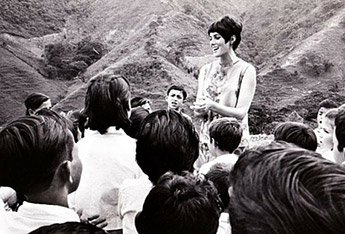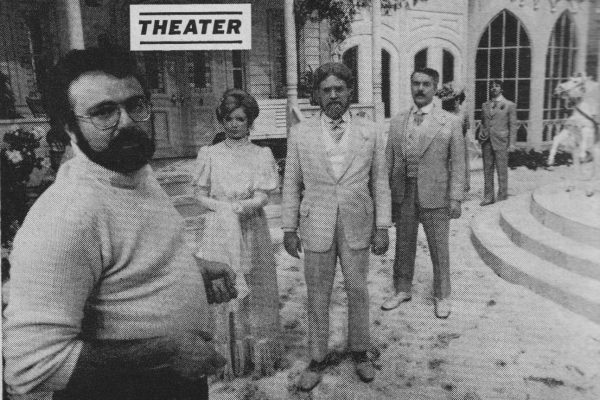Maureen Orth February 7, 2014

This week, a number of commentators have published articles containing incorrect and irresponsible claims regarding the allegation of Woody Allen’s having sexually abused his adopted daughter, Dylan Farrow. As the author of two lengthy, heavily researched and thoroughly fact-checked articles that deal with that allegation—the first published in 1992, when Dylan was seven, and the second last fall, when she was 28—I feel obliged to set the record straight. As such, I have compiled the following list of undeniable facts:
1. Mia never went to the police about the allegation of sexual abuse. Her lawyer told her on August 5, 1992, to take the seven-year-old Dylan to a pediatrician, who was bound by law to report Dylan’s story of sexual violation to law enforcement and did so on August 6.
2. Allen had been in therapy for alleged inappropriate behavior toward Dylan with a child psychologist before the abuse allegation was presented to the authorities or made public. Mia Farrow had instructed her babysitters that Allen was never to be left alone with Dylan.
3. Allen refused to take a polygraph administered by the Connecticut state police. Instead, he took one from someone hired by his legal team. The Connecticut state police refused to accept the test as evidence. The state attorney, Frank Maco, says that Mia was never asked to take a lie-detector test during the investigation.
4. Allen subsequently lost four exhaustive court battles—a lawsuit, a disciplinary charge against the prosecutor, and two appeals—and was made to pay more than $1 million in Mia’s legal fees. Judge Elliott Wilk, the presiding judge in Allen’s custody suit against Farrow, concluded that there is “no credible evidence to support Mr. Allen’s contention that Ms. Farrow coached Dylan or that Ms. Farrow acted upon a desire for revenge against him for seducing Soon-Yi.”
5. In his 33-page decision, Judge Wilk found that Mr. Allen’s behavior toward Dylan was “grossly inappropriate and that measures must be taken to protect her.” The judge also recounts Farrow’s misgivings regarding Allen’s behavior toward Dylan from the time she was between two and three years old. According to the judge’s decision, Farrow told Allen, “You look at her [Dylan] in a sexual way. You fondled her . . . You don’t give her any breathing room. You look at her when she’s naked.”
6. Dylan’s claim of abuse was consistent with the testimony of three adults who were present that day. On the day of the alleged assault, a babysitter of a friend told police and gave sworn testimony that Allen and Dylan went missing for 15 or 20 minutes, while she was at the house. Another babysitter told police and also swore in court that on that same day, she saw Allen with his head on Dylan’s lap facing her body, while Dylan sat on a couch “staring vacantly in the direction of a television set.” A French tutor for the family told police and testified that that day she found Dylan was not wearing underpants under her sundress. The first babysitter also testified she did not tell Farrow that Allen and Dylan had gone missing until after Dylan made her statements. These sworn accounts contradict Moses Farrow’s recollection of that day in People magazine.
7. The Yale-New Haven Hospital Child Sex Abuse Clinic’s finding that Dylan had not been sexually molested, cited repeatedly by Allen’s attorneys, was not accepted as reliable by Judge Wilk, or by the Connecticut state prosecutor who originally commissioned them. The state prosecutor, Frank Maco, engaged the Yale-New Haven team to determine whether Dylan would be able to perceive facts correctly and be able to repeat her story on the witness stand. The panel consisted of two social workers and a pediatrician, Dr. John Leventhal, who signed off on the report but who never saw Dylan or Mia Farrow. No psychologists or psychiatrists were on the panel. The social workers never testified; the hospital team only presented a sworn deposition by Dr. Leventhal, who did not examine Dylan.
All the notes from the report were destroyed. Her confidentiality was then violated, and Allen held a news conference on the steps of Yale University to announce the results of the case. The report concluded Dylan had trouble distinguishing fantasy from reality. (For example, she had told them there were “dead heads” in the attic and called sunset “the magic hour.” In fact, Mia kept wigs from her movies on styrofoam blocks in a trunk in the attic.) The doctor subsequently backed down from his contention.
The Connecticut state police, the state attorney, and Judge Wilk all had serious reservations about the report’s reliability.
8. Allen changed his story about the attic where the abuse allegedly took place. First, Allen told investigators he had never been in the attic where the alleged abuse took place. After his hair was found on a painting in the attic, he admitted that he might have stuck his head in once or twice. A top investigator concluded that his account was not credible.
9. The state attorney, Maco, said publicly he did have probable cause to press charges against Allen but declined, due to the fragility of the “child victim.” Maco told me that he refused to put Dylan through an exhausting trial, and without her on the stand, he could not prosecute Allen.
10. I am not a longtime friend of Mia Farrow’s, and I did not make any deal with her. I have been personally accused of helping my “long-time friend” Mia Farrow place the story that ran in Vanity Fair’s November 2013 issue as part of an effort to help launch Ronan Farrow’s media career. I have also been accused of agreeing to some type of deal with Mia Farrow guaranteeing that the sexual-abuse allegation against Woody Allen would be revisited. For the record, I met Mia Farrow for the first time in 2003, more than 10 years after the first piece was published, at a nonfiction play she appeared in for a benefit in Washington, D.C. I saw her and Dylan again the next day. That is the last time I saw her until I approached her in April 2013 to do a story about her family and how they had fared over the years. I talked to eight of her children, including Dylan and a reluctant Ronan. There was no deal of any kind. Moses Farrow declined to be interviewed for the 2013 piece.



No Comments